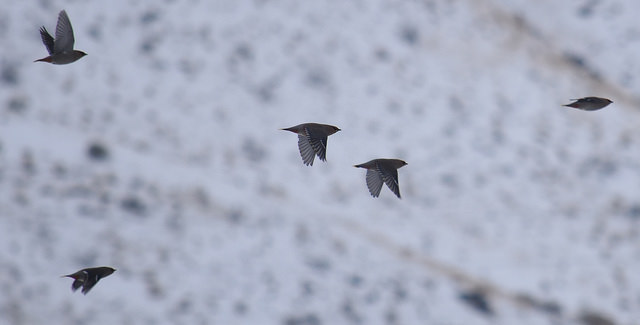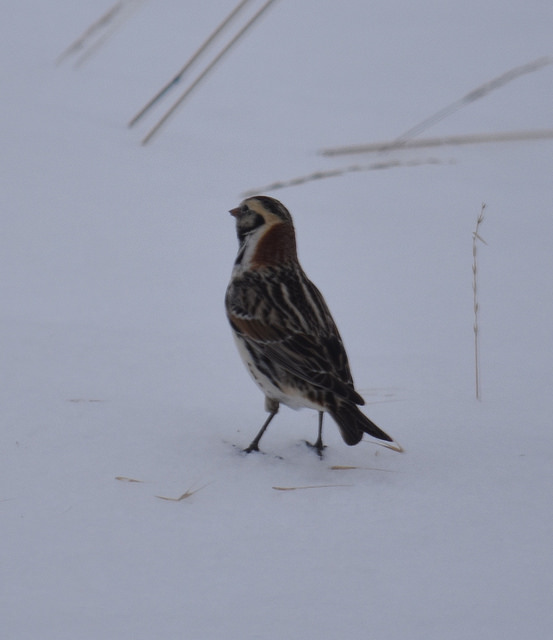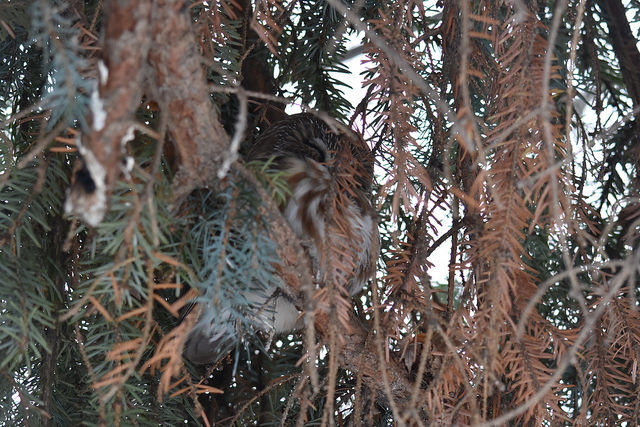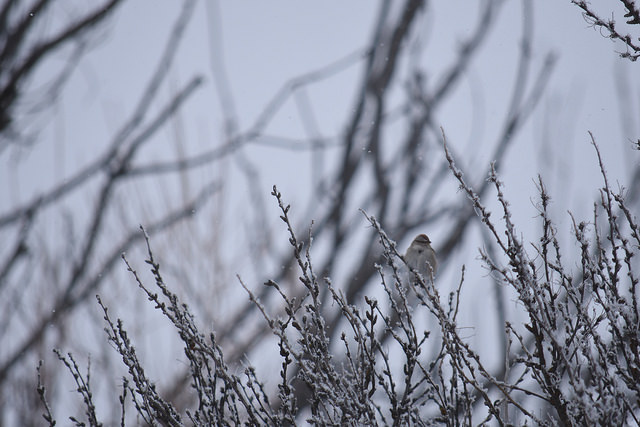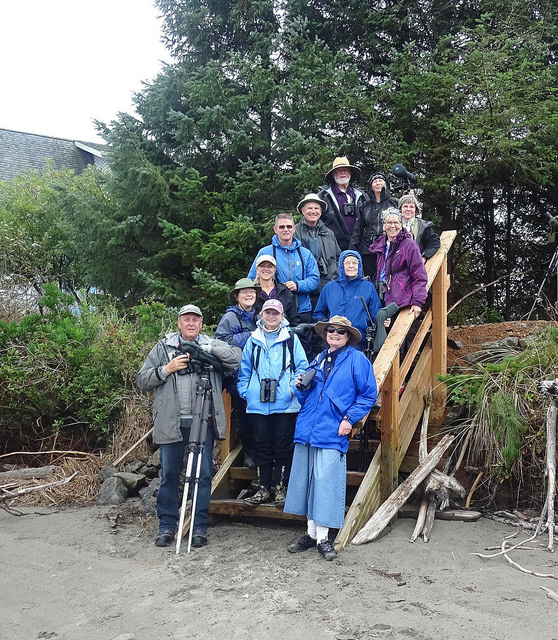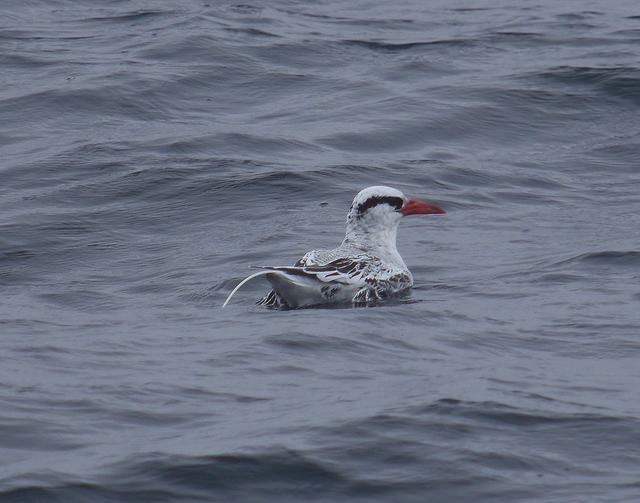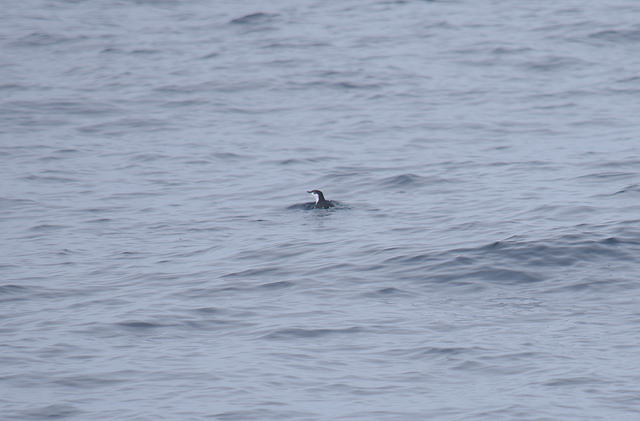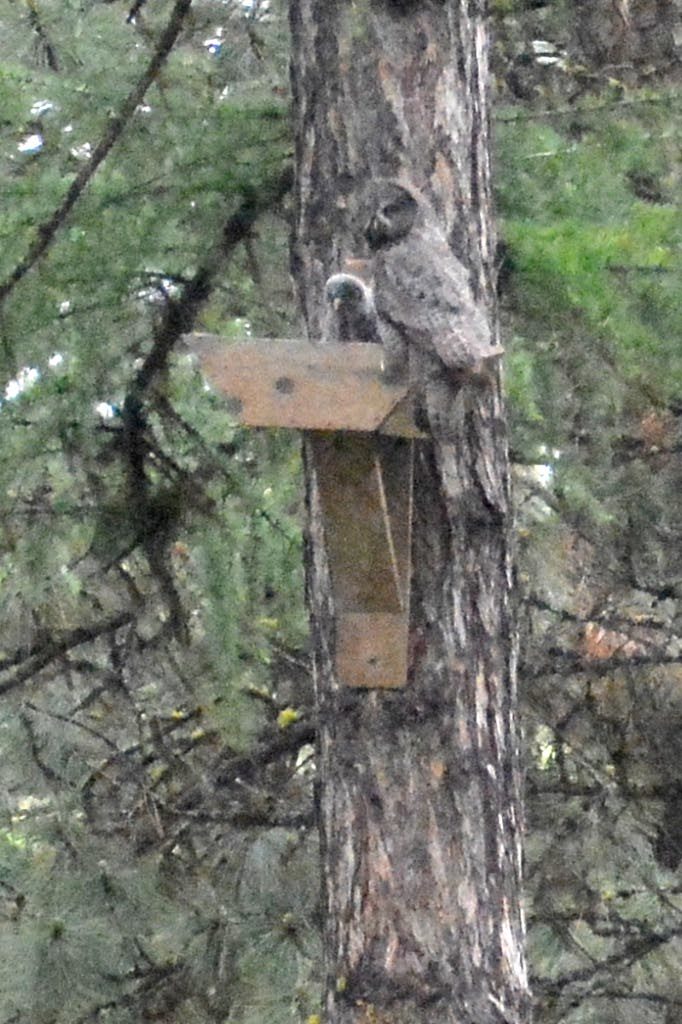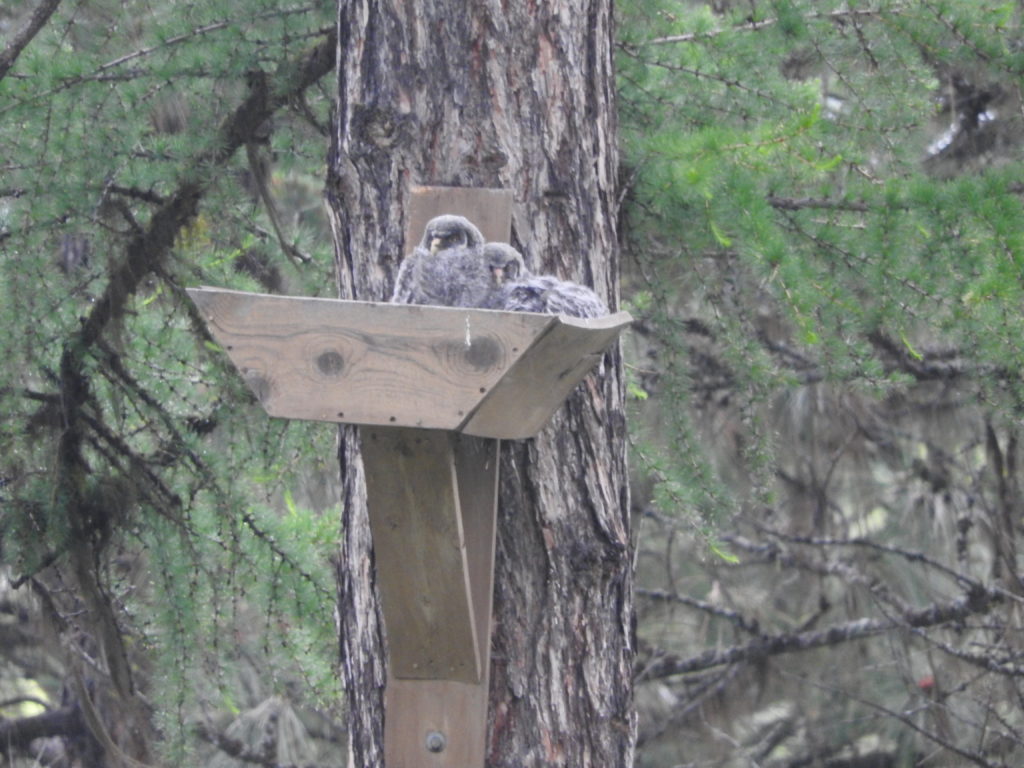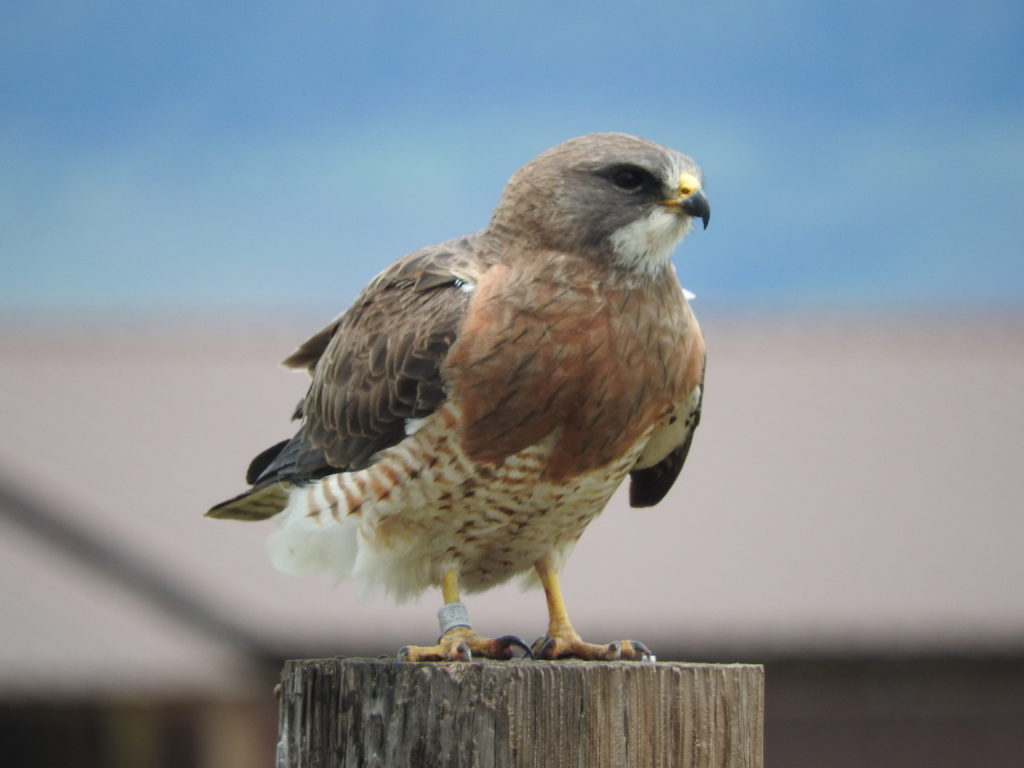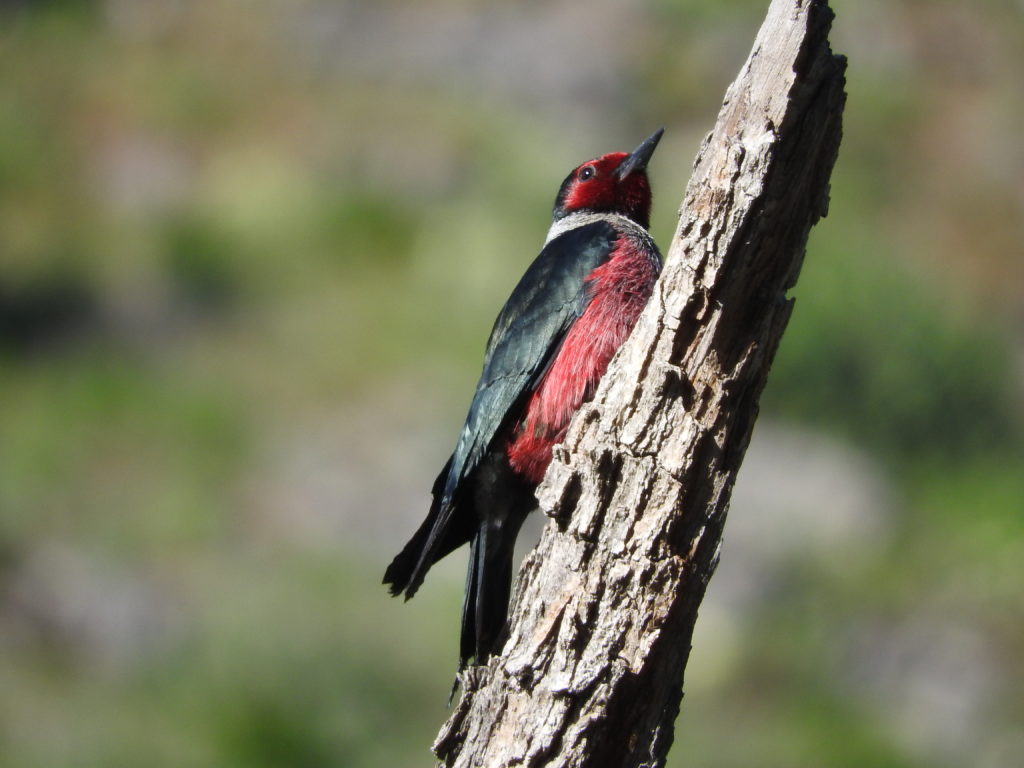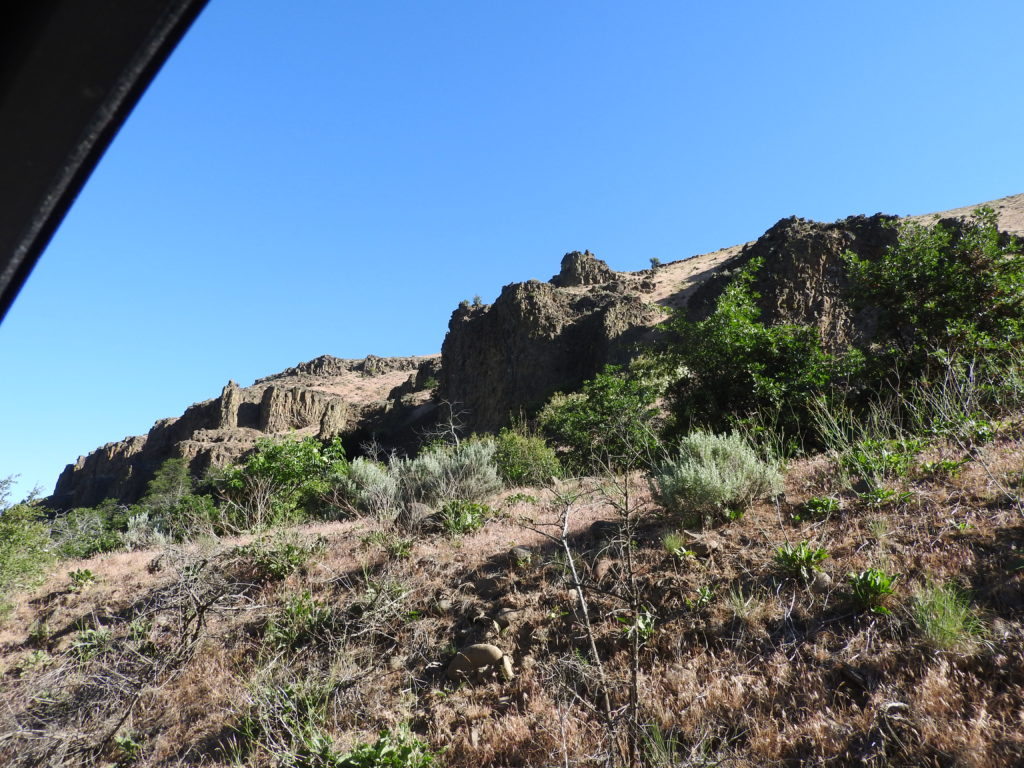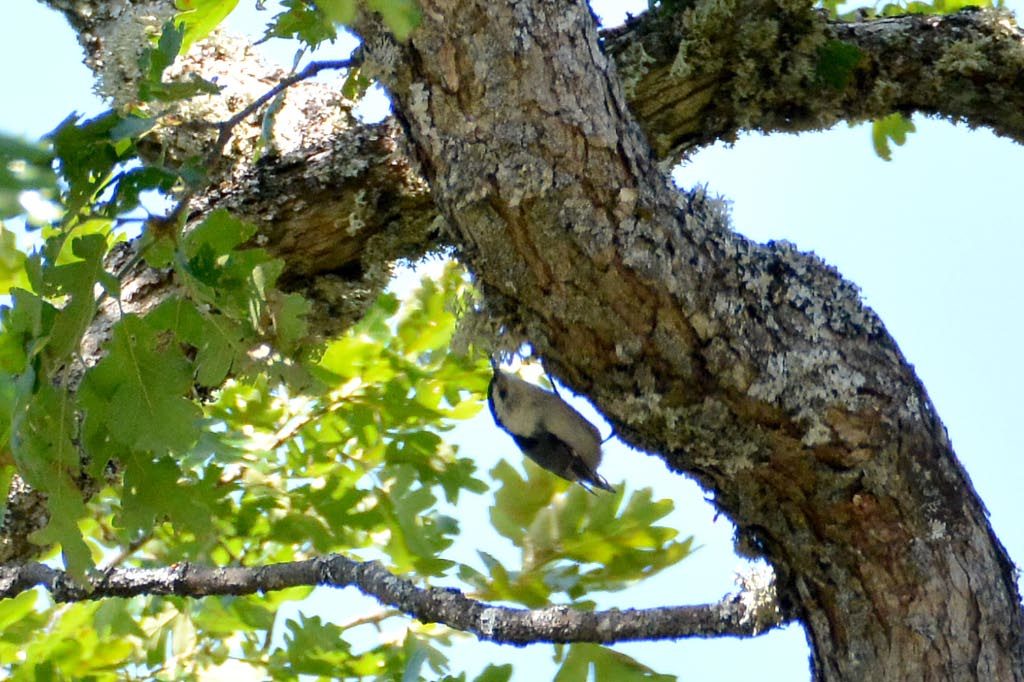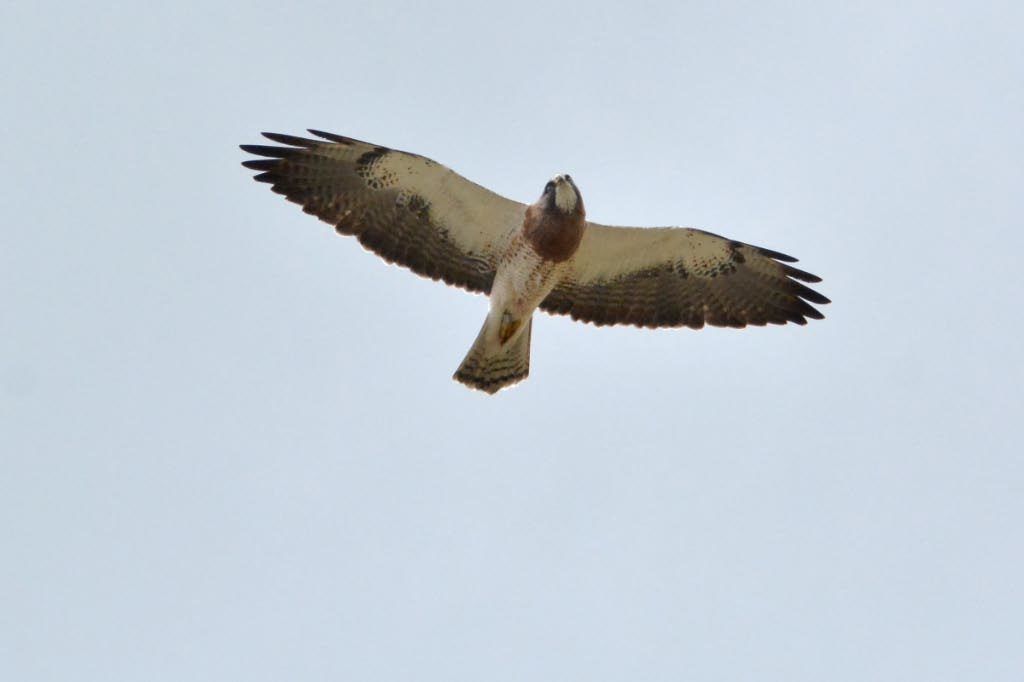Saturday Jan 14th Ken Brown and 15 other ABCers headed east for what has become an annual MLK weekend trip we call our freezathon.” As we have in recent years we met at 7:30 AM at the Snoqualmie Pass ski area comfort station in carpools, this year 4 cars of 4 each. Heather Vorobil was the only first timer on the trip and she rode with Ken, Ryan Wiese and myself, so caravanning was easy, and we set off for the first potty stop at the Confluence State Park in Wenachee. There we saw Redheads as well as a few other waterfowl and quickly headed for the Waterville Plateau. We went up a different way this trip, ascending through McNeil Canyon but on the way saw 9 Trumpeter Swans (unusual for this season and area) in the Columbia River just south of mile marker 229, and got a flock of about 30 Bohemian Waxwings in a tree beside the road along with a few Cedar Waxwings.
We didn’t see much on the ascent through McNeil Canyon, but the day on the Waterville Plateau was wonderful. The visibility was excellent, avoiding the fog that can often make it difficult, and we saw huge numbers of Horned Larks, one flock we conservatively estimated at 2-3000, another of >1000 and many flocks we estimated to be 100-500 bitds. Interesting it seemed most of the HOLA were a pale subspecies, with very little or no yellow, and a minority were the more bright yellow birds we tend to see locally. Our theory is that this may be a big year for northern migrants in this area. We also for the first time on this annual trip found Lapland Longspurs on several occasions
We had a pair of Short-eared owls, initially one perched, then the pair flying over a field. We also spotted a falcon we all hoped would be a Gyrfalcon, but turned out to be a very puffed up Prairie Falcon on a cliff edge for great scope views for all.
We descended from the plateau down Bridgeport Hill Rd., and Ryan managed to get us on a few Sharp-tailed Grouse as they flew from some distant trees into a cattail marsh area near the usual water birch stand. Next we got to Bridgeport State Park about 3 PM, earlier than
usual and all got very close looks at the now seemingly annual Northern Saw Whet owl there.We added a wintering California Gull at the toilets before the park and headed for the Omak Inn. We cleaned up, bemoaned the Seahawks loss, and had dinner at the Breadline as usual.
Sunday we spent the day in the Okanogan Highlands. On the way up we stopped a Fancher Loop to look for the usual Golden Eagle (successfully) and Chukar (not in the morning). The rest of the day was spent driving the roads, stopping for anything we could see, and being amazed at the almost entire absence of any finches of any type. No Gray-crowned Rosy Finches, no crossbills of either species, no Redpolls, no Siskins, no Pine Grosbeaks, just nothing. We did get nice looks at Ruffed Grouse, Golden Eagles, modest numbers of buteos, both Rough-legged and Red-tailed Hawks, a single Gray Jay and two Clark’s Nutcrackers. We had planned to stay for owling, but by 3 PM were just worn down by unrewarded eye-strain and headed down early to try for White-headed woodpecker, seen by the WOS group near 777 Okanogan Highlands Road, where we just could not find a place to get off the road to park 4 cars, and so we went for a last chance try for Chukar. This time the women in the back car spotted them near the usual place by the farm on the lower loop area and we all got nice scope looks as dark approached. Tonight dinner at Rancho Chico where I was thrilled at a whole new menu with a nice vegetarian section, and we all enjoyed the food.
Monday we started by going up the north end of Cameron Lake Rd looking for the White-headed woodpecker and Pygmy Nuthatches we often find in the pines near the American Flag over the road. Today it was early, cold and nearly birdless there. We saw or heard Ravens, Stellar’s Jays and little else. No action at the cattle operation and no sparrows to look over for possible American Tree Sparrows, so we headed back to the Waterville Plateau to try for Gyrfalcon and tree sparrows. No luck on the Gyr, but we did strike American Tree Sparrow nirvana. We initially found them at the copse of trees on Heritage Rd where we also looked for Long-eared owl but without success on the owl. The sparrows responded to a song recording right from the road to pop up for great views.
The rest of the day we looked for Snowy Owl or Gyrfalcon without success, but found a flock of about 40 American Tree Sparrows, found another 1500 or so Horned Larks, found 2-3 Snow Buntings and at least 3 Lapland Longspurs mixed in these flocks.
We called it a day about 2 PM in Waterville, where we all headed for home. A very cold weekend of good time with friends, mixed success at finding our winter specialties, but as always excited to be out birding again. I put a few more photos on my birding blog site and expect much better photos from Pat and Heather when they get them ready. Pat and Heather, please add links to your photos in comments below.
Total Species: 64
Okanogan County Species: 38
Douglas County Species: 41

